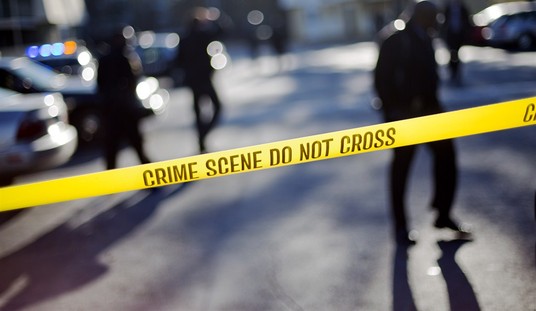As inspiration for the style of his 1950s noir Shutter Island, a twisty thriller set on an island mental hospital, the film’s director Martin Scorsese has cited such films as Laura, Out of the Past, On Dangerous Ground, and The Haunting. Infusing Shutter Island with bizarre flashbacks, grim atmosphere, rust, rain, and confusion, Scorsese has nevertheless missed something important that his film’s celluloid ancestors have in common.
Laura runs 85 minutes. Out of the Past is 97. On Dangerous Ground is 82. The Haunting (the 1963 version) is a whopping, expansive 112 minutes.
Shutter Island? Two hours and 18 minutes. This movie is too. Damn. Long.
No Scorsese picture is entirely devoid of interest, and as this one starts up it keeps you off-base and even excited as its hero Teddy Daniels (a physically and psychologically battered Leonardo DiCaprio, who looks like he got up on the wrong side of the bed and then fell down the stairs) travels to an island in Boston Harbor to investigate the disappearance of an inmate — sorry, patient — from an institution for the criminally insane. She’s a psychotic mom (Emily Mortimer) who drowned her three children. How could she have slipped away from this Alcatraz-like funny farm?
Teddy, a U.S. marshal, and his new partner (Mark Ruffalo) scoop up clues as the shrinks in charge (Ben Kingsley and Max von Sydow) seemingly stand in their way at every turn. A note found in the missing woman’s cell asks, cryptically, “Who is number 67?” and the doctors profess to have no idea what she might have meant. Nature isn’t cooperating either: a hurricane is kicking up, meaning it’ll be impossible to catch a ferry back to the mainland anytime soon.
As if finding his way around this hall of mirrors (everyone seems to be holding back something, and Teddy is specifically warned away from Ward C, the black hole where the most intractable “patients” are subjected to unknown forms of restraint and re-education) wasn’t challenging enough, the marshal has to fight off the jagged shards of his memories.
A few years ago, he was among the soldiers who liberated Dachau, and in the commandant’s office he watched as a Nazi officer, who had survived a suicide attempt, lay helplessly dying on the floor with half his face blown off. After that, his wife (Michelle Williams) died in a fire set by a mad arsonist. In one of many startlingly grotesque and fascinating images, Teddy imagines embracing his wife as she crumbles to ashes in his arms.
Dazed horror and madness can only take you so far, though. Eventually, you have to make the story move to a point, and in the much less successful second hour of the film Scorsese begins to bathe in self-indulgence at exactly the point where his B-movie idols would have been picking up the pace and nailing down loose ends. In one particularly endless sequence — one that could have been done in a minute or two — Teddy sneaks into Ward C, where he gets in a fistfight with a patient and has a long, weird discussion with the man he believes might be the killer of his wife.
Scorsese’s camera lingers on the iron latticework, chokes on the fetid air — and time seems to come to a halt. The cinematography, by Robert Richardson, who also shot JFK and Kill Bill, is appropriately woozy and diseased. But, particularly when it comes to genre films like this one, the plot is much more important than the camerawork.
Many viewers will conclude that what’s worse than the flabby second hour (which, among other subplots, brings up the House Un-American Activities Committee and a suggestion that Shutter Island is really all about locking up innocent socialists) is the final act, which, though it provides some big twists, is far too drawn-out and talky. It’s also unsatisfying — the kind of ending that leaves you walking out of the theater thinking, “I sat through two hours of setup — and that’s the payoff I get?” Dramatically, the finale is something of a ripoff.
Scorsese remains one of the top directors of actors and he hardly ever delivers a film that isn’t worth watching at least twice. Shutter Island is no exception to either rule. But for all of his flourishes, it’s unfortunate that he couldn’t have made this picture more like one of the leanest, creepiest, most disturbing and suspenseful noirs – his own 1991 film, Cape Fear.









Join the conversation as a VIP Member